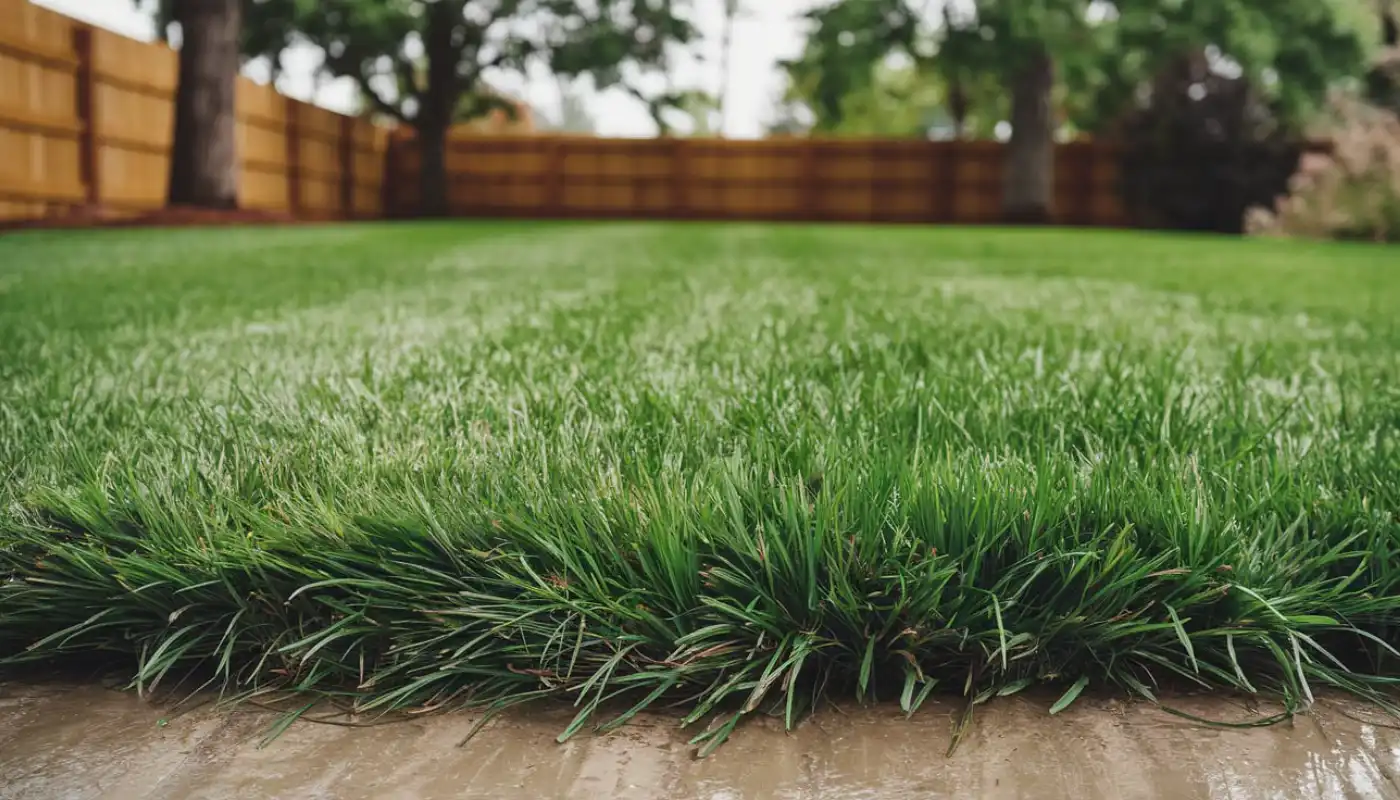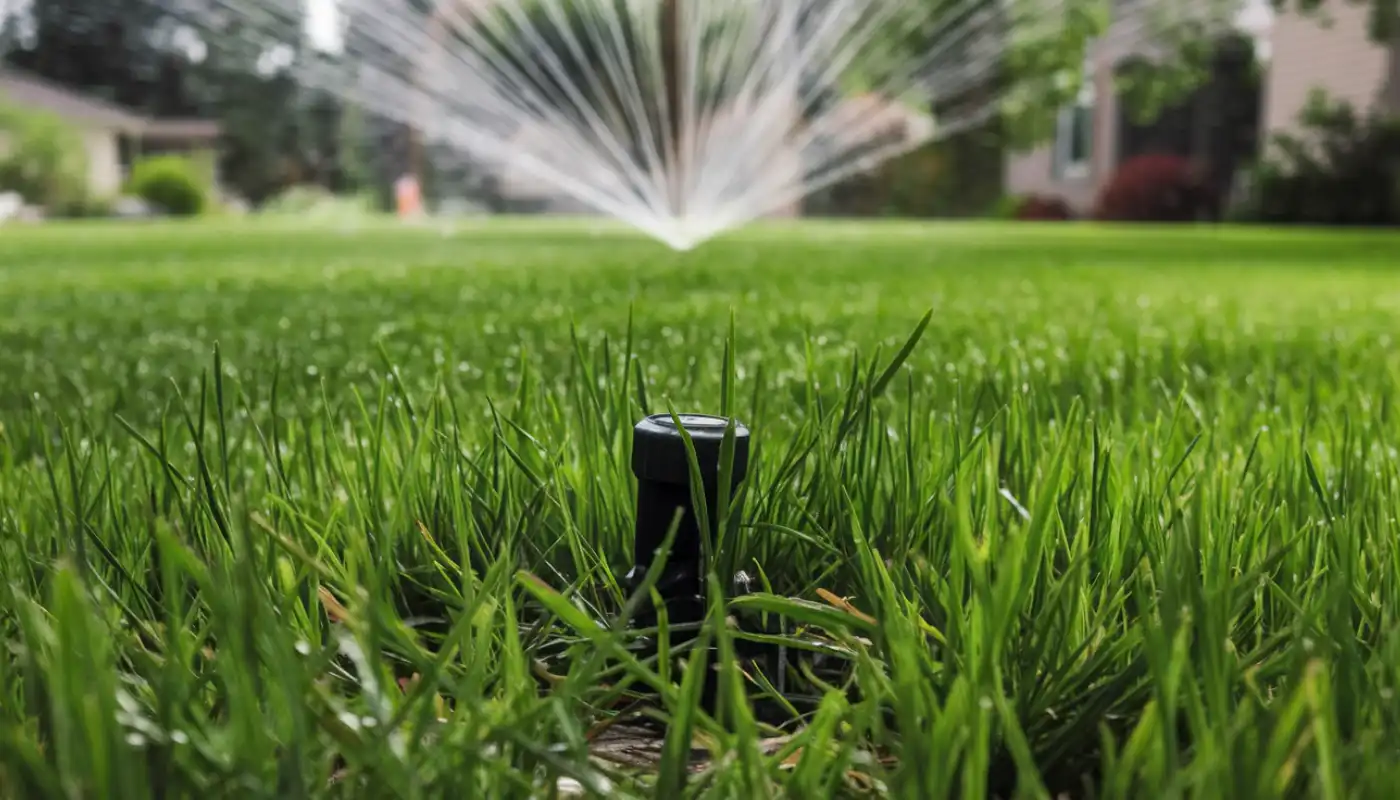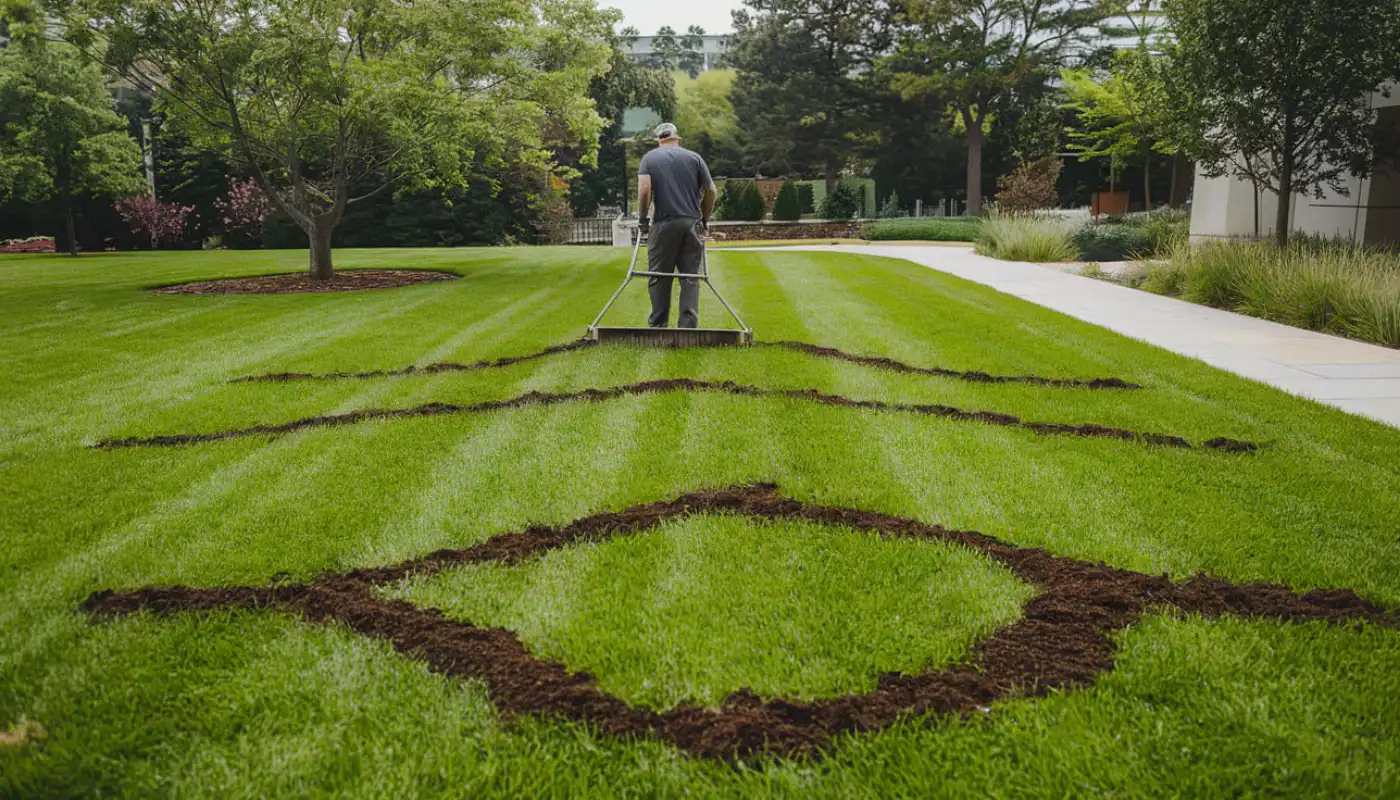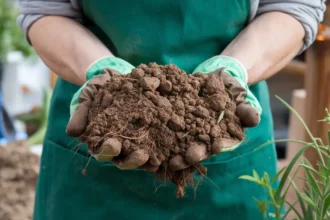For optimal growth and development, your lawn needs regular fertilizer application. However, you need to understand the fertilizer ratio you need for your lawn.
If you are confused about the best lawn fertilizer ratio to apply, you are not alone. Below, you will learn about the best fertilizer ratio recommendation for your lawn. Read on.
What Does A Lawn Fertilizer Ratio Mean?
Have you seen a fertilizer bag marked with NPK 15-15-15 or a series of three digits, and you are not sure what these numbers mean? Perhaps you know what it means but don’t know which ratio your lawn needs to reach its maximum beauty.

To get started, here’s what you’ll need to know.
The three digits on the fertilizer bag are the “fertilizer grade,” usually referred to as the “N-P-K ratio.” This ratio describes the amount of Nitrogen (N), Phosphorus (P), and Potassium (K) present in the fertilizer.
For instance, a fertilizer bag labeled with “21-7-14” will contain 21% Nitrogen, 7% phosphorus, and 14% Potassium. Together, these percentages show the fertilizer’s NPK ratio.
NPK are the three most important macronutrients for the long-term health of your lawn, and different fertilizers have different ratios of each.
For proper lawn maintenance, your lawn needs more of some nutrients than other nutrients, especially as the seasons change. That is, your lawn may need more Nitrogen than Phosphorus and Potassium or more Nitrogen and Phosphorus than Potassium.
This is the main reason why you will see the nutrient ratio on each fertilizer bag to guide you into buying the right nutrient ratio needed by your lawn.
Now that you know what the lawn fertilizer ratio means, let’s go on to discuss the best lawn fertilizer ratio recommendation.
Always remember that understanding this ratio, buying the right amount of fertilizer, and applying the fertilizer at the right time of the season will help your lawn grow to your dreams.
The Role Of Nitrogen, Phosphorous, And Potassium In The Soil

Nitrogen helps the lawn to appear lush, green, and thick. It stimulates new root growth and also aids in the formation of chlorophyll.
Phosphorus aids in the development and strengthening of healthy root growth of turfgrass.
It ensures that your grasses have strong roots to keep your lawn healthy and ensures that it can withstand the changing weather and stresses of the seasons. Phosphorus is also actively involved in the lawn’s metabolic processes.
Potassium is essential to overall plant health. It supports internal processes, such as protein production, photosynthesis, water absorption, and respiration.
The Best Lawn Fertilizer Ratio Recommendation

Usually, the best fertilizer for lawns should be the one that provides the nutrients needed more by your lawn but is lacking in your soil. Hence, the best ratio is one with a higher number of the more-required soil nutrients.
However, without a proper soil analysis, it would be impossible or difficult to determine the nutrients lacking in the soil. Therefore, buying fertilizer without conducting soil analysis is simply a shot in the dark.
For instance, you may end up adding more Nitrogen than necessary, leading to excessive top growth, burnt appearance, crispy and yellowing (or browning) of leaf tips, shallow root systems, etc.
To achieve the best result, conduct a soil test to determine the best fertilizer ratio to opt in for. However, if conducting a soil test is not feasible, a general-purpose fertilizer with a 3-1-2 NPK ratio, such as 12-4-8 or 21-7-14, is ideal, according to lawn experts.
Some other experts agreed that fertilizers with NPK analysis ratios of 4-1-2 (or ratios in that range) are acceptable for use on any lawn. More so, the ideal fertilizer for lawns should have at least half of its Nitrogen in a slow-release form.
Important Lawn Fertilization Tips

As stated earlier, a regular and well-planned fertilization program is an essential part of proper lawn maintenance.
Under-fertilized lawns tend to be thin with poor colour. In contrast, over-fertilized lawns, especially with high levels of Nitrogen, tend to have thatch problems, and are more susceptible to diseases and insect damage.
The best time to fertilize your lawn is when the grasses are actively growing and in need of nutrients.
Use a little bit of fertilizer at a time. Applying a lot of fertilizer at one time is bad for the grass. And as long as your lawn is doing well, don’t fertilize it just for the sake of doing it.
The ideal NPK ratio for your lawn varies from season to season based on the nutrient requirements of the grasses for temperature and weather changes.
Always follow the manufacturer’s instructions for proper application instructions and rates. Most cases of “it didn’t work!” are due to user error and non-compliance with instructions.
Finally, although lawn fertilization is an important part of creating lush, green lawns, it is not the complete equation.
If after following all the best tips on mowing, fertilizing, aerating, and liming your lawn, you still aren’t getting the desired results, you may need to reconsider your turf type. Consult a professional to ensure that you are using the right grass variety for your location and climate.
Frequently Asked Questions (FAQs)
The ideal ratio for lawn fertilizer usually consists of three to four times more Nitrogen than Phosphorus content. The Potassium content should be about one-half of the Nitrogen content.
Ideally, you should mow and rake your lawn before fertilizing. Doing this will enable the fertilizer to reach the soil easier. Aerating your lawn prior to fertilizer application can also help. When fertilizing a lawn, it is best to apply liquid fertilizer to aid absorption.
Fertilizing your lawn as often as every two weeks is not an ideal practice and can lead to over-fertilizing. Over-fertilization will likely lead to problems like lawn burn, excessive grass growth, and so on. A more natural and healthier way to feed your lawn every two weeks is to leave the grass clippings after mowing on the lawn surface. If your lawn is suffering from over-fertilization, don’t worry, liming and/or adding a generous amount of water can help heal your lawn.






